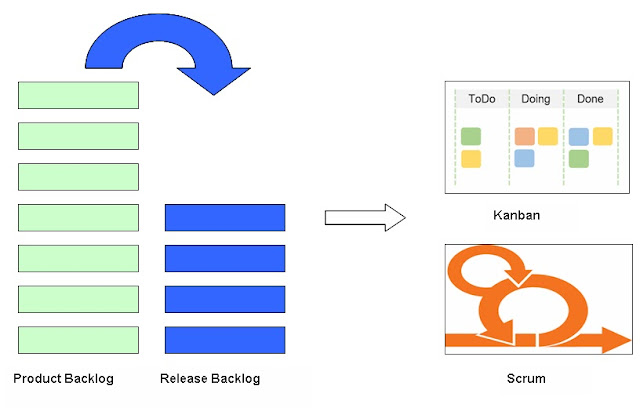
Release planning creates a plan to deliver a product value increment. This plan is called release plan and delivery team commits to the plan. Product owner, scrum master and other stakeholders support the team to achieve plan objective in their respective roles.
Who should attend Release planning meeting?
Release planning meeting should be planned and managed by portfolio management team or the designated scrum master with following invitees.
1. Scrum master – Facilitates the meeting.
2. Business Sponsor – Shares the importance of release.
3. Product owner – Represents business and owner of the product backlog.
4. Delivery team – Shares input on technical feasibility and dependencies.
5. SME & Architect – Provide on-demand expert advice
6. Stakeholders – Impacted by release who help in shaping the release plan.
Input needed
1. A ranked product backlog managed by the product owner
2. Acknowledgement if any new backlog item has been added
3. High level vision and business objective
4. Product feedback, market situation and expected deadline
5. Team’s capability, velocity and availability
6. Meeting rooms, conference bridge, hardware and software tools
7. Flip-chart, whiteboard, marker and post-it
Expected output
1. Release plan and commitment
2. Newly added product backlog item
3. Issues, risks, dependencies, and assumptions to be monitored
4. Suggestions to improve future release planning meetings
Release Planning Meeting checklist
1. Book the calendar of meeting invitees by sending the agenda in advance
2. Plan for the travel if needed
3. Book the meeting room of sufficient size with addition space for breakout sessions
4. Book video conference bridge for distributed teams
5. Arrange laptops, computer and projector
6. Arrange whiteboard, flip-charts, marker, paper, pencil and post-it
Release Planning Meeting Agenda
1. Opening the Meeting -
Scrum Mater welcomes the invitees, states the agenda & purpose of the meeting, and introduces the business sponsor. Business sponsor shares his view on importance of the release.
2. Product vision and roadmap -
Product owner share the product vision with larger picture and roadmap of the product development. Then, he/she explains how this release fits into the larger picture and roadmap reflecting the prioritized product backlog. Any new item added into the product backlog is also shared.
3. Release theme, milestone and number of iterations –
Delivery team leads the review of previous release retrospective and current status of the iterations. All participants decide a release theme & release name collaboratively. Velocity of the team if available is presented otherwise a realist velocity value is assumed. Key milestone delivery deadlines are reviewed. Timeboxes for the release are agreed. All participants come up with 1st draft to release schedule and number of iterations using the roadmap, velocity and key milestone deadlines. Team reviews any new issue & concern has come up.
4. Definition of done, Backlog Item Sizing, Story Mapping –
Team and product owner lead the review of definition of done. Definition of done is updated based change in technology and skill of the team and any other environmental factor. Next, delivery team considers items to be included for the release using the prioritized backlog. SME and product owner clarify the queries of the team around user story and its acceptance criteria which helps them in sizing the backlog item in terms of effort. Team uses different estimation techniques (planning poker is the most popular one) for backlog item sizing. Considered backlog items are mapped to iterations of the release. Larger items are split into multiple iterations. Release schedule and number of iterations are reviewed & updated if required.
5. Dependencies, assumptions and adjustments –
Technical, business, infrastructure and operation dependencies are checked. Assumptions are reviewed. Release impacted stakeholders should recheck their respective dependencies and assumption related impact. Release backlog and release schedule are adjusted accordingly if required.
6. Commit, retrospect and close -
Review of the above two steps are repeated till delivery team and product owner reaches an agreement on release backlog & release schedule. Now, it’s time to commit the release plan. Communication and logistics are planned for the release. All participants of release meeting retrospect the release planning meeting and feedback are recorded. Risk, issues, dependencies and assumptions of the release are recorded. Action plan is prepared and assigned to respective owners. Now, release planning meeting is ready to close.
| Input | Steps | Output |
|---|---|---|
| Ranked product backlog | Plan Meeting and Logistic | Release Schedule |
| Vision and Roadmap | Share Vision & Roadmap | Release backlog |
| Business & architect inputs | Release Theme, Schedule, Iterations | Assumptions |
| Velocity & availability | Definition of done, story Sizing & Mapping | Dependencies |
| Meeting rooms | Dependencies, Assumptions, Adjustments | Risks |
| Tools & stationeries | Commit, Action plan, Retrospect | Feedback |
No comments:
Post a Comment